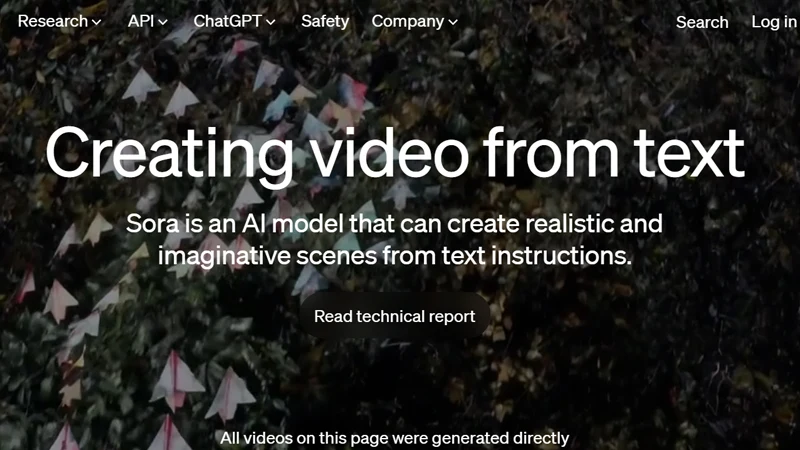OpenAI has recently introduced Sora, a cutting-edge text-to-video generator that utilizes generative artificial intelligence (AI) to instantly produce short videos based on written prompts. While not the pioneer in this technology, Sora stands out for the high quality of its videos, marking a significant leap for OpenAI and the future of text-to-video generation.
About Sora
Sora is a text-to-video generator capable of creating videos up to 60 seconds long based on written prompts, employing generative AI. The model can also generate videos from existing still images, showcasing its versatility. Though not available for public use yet, OpenAI has shared impressive examples of Sora-generated videos, demonstrating its capabilities in creating realistically detailed scenes.
Sora’s Launch and Examples
OpenAI CEO Sam Altman engaged with the online community, soliciting prompt ideas through social media. The resulting videos showcased Sora’s ability to bring creative and diverse prompts to life, such as “two golden retrievers podcasting on top of a mountain” and “a bicycle race on the ocean with different animals as athletes riding bicycles with drone camera view.” These examples highlighted the tool’s potential to generate complex, detailed, and visually appealing content.
Comparison with Other AI-Generated Video Tools
While Sora is not the first of its kind, industry analysts emphasize the apparent quality and impressive length of the videos it produces. Fred Havemeyer from Macquarie notes that Sora’s launch represents a significant step forward, creating videos that look more natural and respect physics and the real world better than previous technologies. This quality distinguishes Sora from other AI-generated video tools.
Potential Risks and Ethical Concerns
Despite the excitement surrounding Sora, concerns about ethical and societal implications of AI-generated videos persist. Analysts, including Havemeyer, highlight potential risks in political contexts, such as the 2024 election cycle, where realistic videos could be misused for fraud, propaganda, and misinformation. The negative externalities of generative AI are expected to be a critical topic for debate, requiring careful consideration by businesses and individuals.
Introducing Sora, our text-to-video model.
Sora can create videos of up to 60 seconds featuring highly detailed scenes, complex camera motion, and multiple characters with vibrant emotions. https://t.co/7j2JN27M3W
Prompt: “Beautiful, snowy… pic.twitter.com/ruTEWn87vf
— OpenAI (@OpenAI) February 15, 2024
Safety Measures and Caution
OpenAI acknowledges the potential risks and emphasizes its commitment to safety before making Sora widely available. The company is actively working with domain experts, referred to as red teamers, who specialize in areas like misinformation, hateful content, and bias. Tools, including a detection classifier, are being developed to identify misleading content generated by Sora. This cautious approach aligns with OpenAI’s commitment to responsible AI development.
Transparency and Limited Information
Despite the impressive capabilities of Sora, there is limited information available about its development. OpenAI’s technical report does not disclose the specific imagery and video sources used to train Sora. This lack of transparency raises questions about the tool’s data sources and the potential implications of its usage. OpenAI’s cautious release strategy aligns with ongoing efforts to address these concerns.
Legal Landscape and Background
The release of Sora occurs amid the backdrop of legal challenges faced by OpenAI and its business partner Microsoft. Lawsuits from authors and The New York Times raise questions about copyrighted works of writing to train ChatGPT, another OpenAI creation. These legal issues underscore the complexities and ethical considerations associated with AI development and usage.
FAQ’s
How does Sora compare to other AI-generated video tools?
Sora stands out for the quality and length of its generated videos. Industry analysts note that Sora's videos appear more normal, respecting physics and the real world, which sets it apart from other AI-generated video tools.
Bottom Up
OpenAI’s Sora represents a significant advancement in the field of text-to-video generation, showcasing impressive capabilities and raising important ethical considerations. While the tool’s cautious release strategy and safety measures are commendable, ongoing transparency and responsible AI development are crucial to address potential risks and ensure a positive impact on society. As the technology evolves, it will be essential to strike a balance between innovation and ethical considerations to harness the full potential of AI in a responsible manner.

